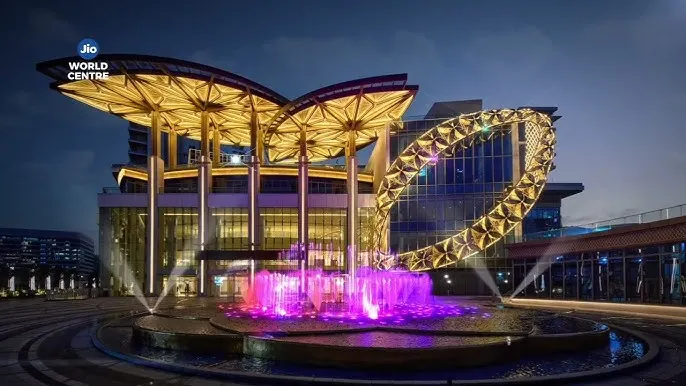Table of Content
In today’s rapidly evolving work environment, businesses and professionals are increasingly weighing the benefits of Co-working Spaces vs. Traditional Offices. As companies seek flexible and cost-effective solutions to meet dynamic work demands, understanding the differences between these two models is essential. In this article, we dive into the advantages and drawbacks of coworking spaces and traditional offices, helping you decide which option best suits your needs.
What Are Coworking Spaces and Traditional Offices?
Coworking Spaces are shared work environments where individuals and businesses, often from diverse industries, work alongside each other. These spaces typically offer flexible memberships, shared amenities, and a collaborative atmosphere. In contrast, Traditional Offices are fixed, dedicated spaces usually occupied by a single organization. They often require long-term leases and offer more control over the workspace but come with higher costs and less flexibility.
Also Read: Commercial Real Estate Goes Green, Fueled by GCC & IT Demand
Differences Between Coworking Spaces and Traditional Offices
To make an informed decision, it's crucial to compare these workspaces across several key factors. Below is a detailed comparison table summarizing the main differences:
|
Feature |
Coworking Spaces |
Traditional Offices |
|
Flexibility |
Short-term leases, day passes, flexible membership options |
Long-term leases, fixed rental terms |
|
Cost |
Lower upfront costs; pay-as-you-go models |
Higher fixed costs, maintenance, and utilities |
|
Amenities |
Shared amenities (meeting rooms, kitchens, lounges) |
Customized, dedicated facilities tailored to company needs |
|
Networking & Community |
High collaboration, frequent networking opportunities |
Limited interaction; less opportunity for spontaneous collaboration |
|
Maintenance |
Managed by the provider; minimal admin hassle |
In-house management required; additional operational costs |
|
Scalability |
Easy to scale up or down as business needs change |
Fixed space limits; expansion requires new leases |
These comparisons help highlight how Co-working Spaces vs. Traditional Offices cater to different business needs and lifestyles. While coworking spaces offer flexibility and a vibrant community, traditional offices provide a stable, controlled environment for long-term operations.
.jpg)
Advantages of Co-working Spaces
- Flexibility and Cost Savings
Co-working spaces allow businesses and freelancers to scale their workspace requirements without the burden of long-term commitments. This flexibility is especially beneficial for startups and small businesses that need to adjust their space based on evolving needs.
- Enhanced Networking Opportunities
One of the key draws of coworking spaces is the opportunity to network with professionals from various fields. This collaborative environment can spark innovation, foster partnerships, and create opportunities for growth.
- Modern Amenities and Support
Coworking spaces are designed with modern work requirements in mind. They typically offer state-of-the-art technology, comfortable workstations, and amenities such as high-speed internet, meeting rooms, and recreational areas all of which are maintained by the space provider.
- Work-Life Balance
The vibrant, community-driven atmosphere in coworking spaces can improve work-life balance by fostering a positive work environment and providing opportunities for social interaction.
.jpg)
Advantages of Traditional Offices
- Privacy and Control
Traditional offices offer a dedicated space for your organization, providing a higher degree of privacy and control over the workspace. This is ideal for companies that require customized setups or deal with confidential information.
- Brand Identity
A well-designed traditional office can reinforce your brand identity. It allows businesses to create a tailored environment that reflects their culture and values, which can be important for both employee satisfaction and client impressions.
- Stability for Long-Term Growth
Long-term leases in traditional offices provide stability for established businesses. With a fixed space, companies can invest in the interior design and infrastructure that supports their long-term operational needs.
- Customization
Traditional offices can be fully customized to suit the specific needs of a business. From layout to décor, every aspect can be designed to enhance productivity and reflect the company’s brand ethos.
Also Read: FICCI and Assocham Seek Input Tax Credit under CGST for Commercial Properties on Lease
Factors to Consider When Choosing Between the Two
When deciding between Co-working Spaces vs. Traditional Offices, consider the following factors:
Business Stage and Size
- Startups and Freelancers:
May benefit more from coworking spaces due to lower costs and flexibility. - Established Companies:
Might prefer traditional offices for their stability, privacy, and ability to customize the workspace.
Budget Constraints
- Coworking Spaces:
Generally offer cost-effective solutions with flexible pricing plans. - Traditional Offices:
Require higher initial investments and fixed monthly expenses.
Company Culture and Collaboration Needs
- Coworking Spaces:
Ideal for companies that value collaboration, creativity, and a dynamic work environment. - Traditional Offices:
Better suited for businesses that prioritize privacy, structured workflows, and formal work settings.
Future Growth Prospects
- Scalability:
Consider whether your business needs may change over time. Coworking spaces offer the ability to scale quickly without long-term commitments, while traditional offices might be better for stable, long-term operations.
Market Trends: Co-working Spaces vs. Traditional Offices
Recent trends indicate that both coworking spaces and traditional offices are evolving to meet modern work requirements. As remote work becomes more common, coworking spaces are incorporating features like hotdesking and flexible membership plans. Conversely, traditional offices are adapting by integrating modern amenities and open layouts to foster a more collaborative environment.
Key Trends:
- Increased Demand for Flexibility:
Businesses are looking for short-term solutions that can easily adapt to changing market conditions. - Focus on Sustainability:
Many coworking spaces are designed with eco-friendly features, aligning with the growing emphasis on sustainability in the workplace. - Technological Integration:
Both coworking spaces and traditional offices are leveraging technology to improve efficiency and enhance the work experience.
Conclusion
Deciding between Co-working Spaces vs. Traditional Offices depends on your business needs, budget, and long-term goals. Coworking spaces offer flexibility, cost savings, and a vibrant networking environment, making them ideal for startups and freelancers. In contrast, traditional offices provide stability, privacy, and the ability to create a customized workspace that aligns with your brand identity suitable for established companies with long-term plans.
Understanding the unique advantages and limitations of each option will help you choose the right environment that enhances productivity and supports your business growth. As the workplace continues to evolve, staying informed about these trends will ensure that you make the best decision for your professional needs.
Embrace the future of work by carefully considering the merits of both Co-working Spaces vs. Traditional Offices. Whether you prioritize flexibility or stability, the modern workspace has something to offer every business, paving the way for a more dynamic and efficient future.
Also Read: Women Homebuyers Rising: 30% Invest, 69% Purchase for End-Use

_1740737596.webp)









_1766133697.webp)
Ans 1. Coworking spaces offer flexible, short-term leases with shared amenities and vibrant networking opportunities. Traditional offices provide dedicated, long-term spaces with more privacy and customizability.
Ans 2. Startups and freelancers benefit from coworking spaces due to their lower upfront costs, flexible terms, and collaborative environments that foster creativity and networking.
Ans 3. Traditional offices provide a stable, dedicated space that supports a controlled work environment, brand identity, and customized setups tailored to long-term operational needs.
Ans 4. They bring together professionals from diverse industries, enabling spontaneous collaboration, idea-sharing, and partnerships that can drive innovation and business growth.
Ans 5. Consider your business size, budget, flexibility needs, desired level of privacy, and the overall work culture that best supports your operational goals.
Ans 6. Generally, yes—coworking spaces typically require lower initial investments and offer scalable options, making them an economical choice for small businesses and freelancers.
Ans 7. Absolutely—many traditional offices now incorporate modern designs like open layouts and collaborative zones, blending stability with the benefits of a dynamic work environment.
Ans 8. With the shift to remote and hybrid work, coworking spaces provide the needed flexibility, while traditional offices are evolving with modern amenities to support a mix of structured and flexible work setups.